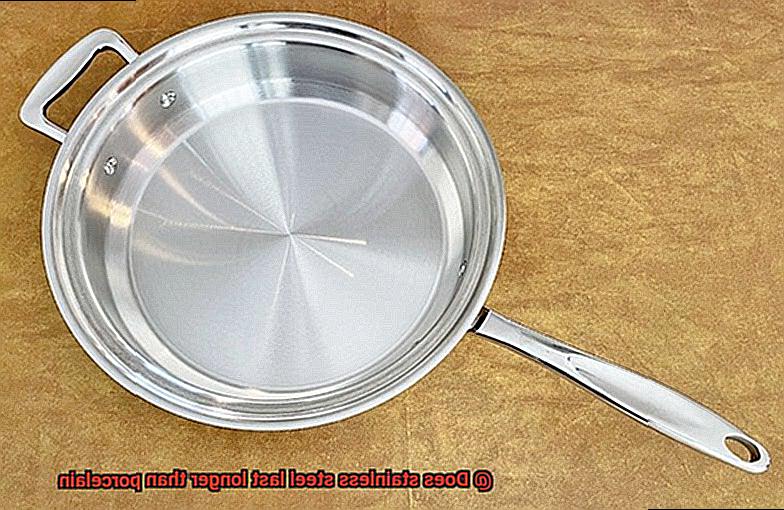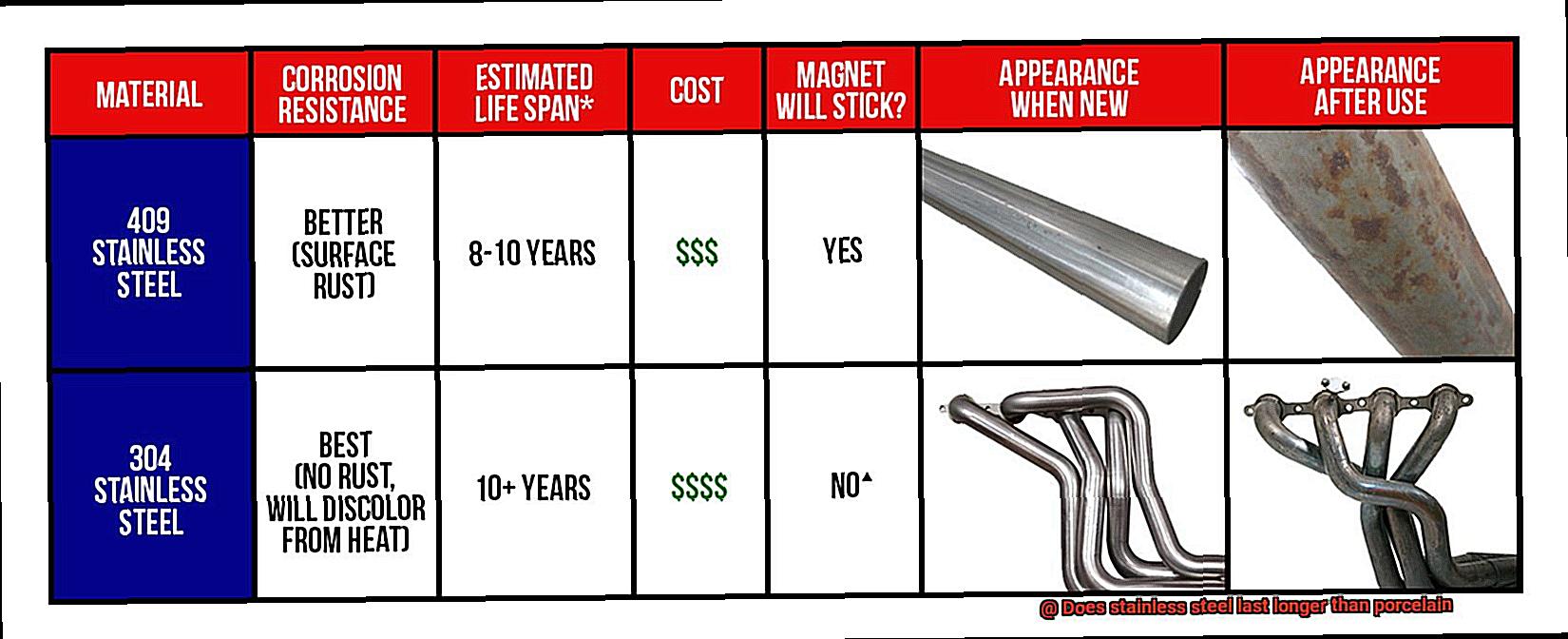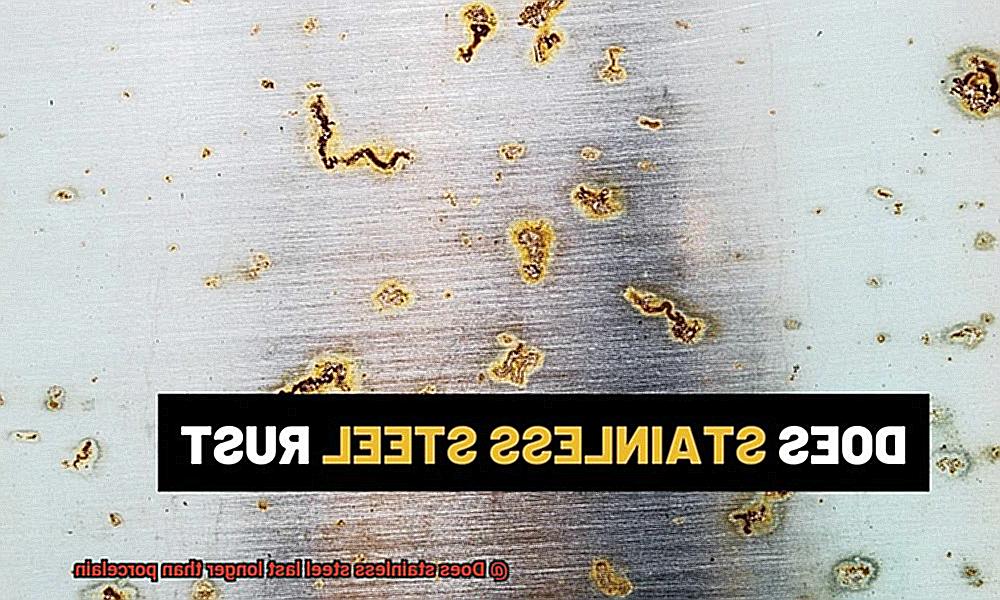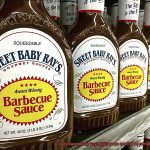Stainless steel or porcelain – the debate rages on. Which material reigns supreme when it comes to durability? It’s not as simple as picking a side and sticking to it. Both materials have their strengths and weaknesses, and there are numerous factors to consider when examining the longevity of your kitchenware and appliances.
In this blog post, we’re going to take a deep dive into the world of stainless steel and porcelain. We’ll explore which one lasts longer, examining everything from strength to scratch resistance. Why does it matter? Because replacing appliances can be expensive, and investing in something that lasts can save you money in the long run.
But wait, there’s more. We’ll also debunk some common myths about these materials. Think porcelain is fragile? Think again. Believe that stainless steel is always strong? Not necessarily. The truth is more nuanced than you might think.
Ultimately, we’ll help you see that there isn’t a one-size-fits-all answer to this question. It depends on how you use your appliances and how well you maintain them. Ready to become an expert on stainless steel vs porcelain? Let’s get started.
Contents
Stainless Steel and Porcelain
When it comes to grilling, the material you choose for your cooking surface can make a huge difference. Two popular options are stainless steel and porcelain, each with their own unique advantages and disadvantages.
Stainless steel is a strong and durable metal that’s resistant to rust, corrosion, and stains. It can withstand high temperatures without chipping or cracking, making it an excellent choice for those who prioritize durability. Plus, its sleek and stylish appearance is perfect for modern grills. Stainless steel is also easy to clean and maintain, which makes it ideal for low-maintenance grillers.
On the other hand, porcelain is a type of ceramic material that’s coated on metal surfaces like cast iron or steel. The coating gives the grill a glossy appearance while protecting it from rust and corrosion. Porcelain provides excellent heat retention and distribution, which helps produce evenly cooked food. Plus, it’s easy to clean and maintain, making it a great choice for those who value convenience.
However, porcelain can be more fragile than stainless steel. While it’s generally resistant to scratches and heat, it can crack or chip if dropped or hit with a hard object. Porcelain grates are also more susceptible to damage from acidic foods like citrus or vinegar.
In summary, here are some key takeaways:
Advantages of Stainless Steel:
- Corrosion-resistant
- Durable and strong
- Withstands high temperatures
- Sleek and stylish appearance
- Easy to clean and maintain
Disadvantages of Stainless Steel:
- More expensive than porcelain
- Can be prone to fingerprints
Advantages of Porcelain:
- Excellent heat retention and distribution
- Easy to clean and maintain
- Glossy appearance
- Protects against rust and corrosion
Disadvantages of Porcelain:
- Can be more fragile than stainless steel
- More susceptible to damage from acidic foods
- May require more delicate handling
Durability of Stainless Steel vs. Porcelain
Both materials have their own unique pros and cons when it comes to durability.
Stainless steel is a powerhouse in terms of strength and resistance to rust and corrosion. It’s also less prone to chipping and cracking, making it an excellent choice for outdoor grilling. However, stainless steel can be prone to scratching, which can affect its appearance over time. If you’re someone who cares about the visual appeal of your grill, you’ll want to keep this in mind.
Porcelain, on the other hand, is known for its hardness and resistance to wear and tear. It’s also highly resistant to heat, making it an ideal material for cooking and grilling. However, porcelain is more prone to chipping and cracking than stainless steel, especially if it’s exposed to high temperatures or sudden changes in temperature.
When it comes down to overall lifespan, both materials can last for many years with proper care and maintenance. Stainless steel may require occasional polishing to maintain its appearance, while porcelain may need more frequent cleaning to prevent staining or discoloration.
But which material should you choose? It all depends on your specific needs and intended use. For grilling purposes, stainless steel may be a better choice due to its resistance to rust and corrosion, as well as its ability to withstand high temperatures. However, if you plan on using your grill for baking or cooking in the oven, porcelain may be a better choice due to its heat resistance and non-reactive properties.
Heat Retention of Stainless Steel vs. Porcelain
It can make or break the taste and quality of your food, so it’s essential to choose the right material. In this section, we’ll delve into the heat retention capabilities of two popular grill materials: stainless steel and porcelain.
Stainless steel is a beast in the heat retention department. Its excellent conductivity ensures even distribution of heat across its surface, allowing it to reach high temperatures quickly and maintain them for extended periods. This makes it perfect for searing meat and achieving a crispy texture on the surface. So, if you’re looking for a grill that can handle high temperatures and retain heat for longer, then stainless steel is the way to go.
Porcelain, however, is not as adept at retaining heat as stainless steel. It takes longer to warm up and lacks even heat distribution across its surface. As a result, it may take more time to reach the desired cooking temperature and may struggle to maintain it for extended periods. This can lead to unevenly cooked food and may require constant adjustments to the temperature settings. However, porcelain grills are more durable and resistant to corrosion than their stainless steel counterparts.
In terms of heat retention, stainless steel has a clear advantage over porcelain. Its ability to distribute heat evenly and maintain high temperatures makes it an excellent option for grilling. But don’t overlook porcelain’s other benefits, including its durability and resistance to corrosion.
If you’re in the market for a grill, consider your priorities and specific needs when choosing between stainless steel and porcelain. Are you looking for superior heat retention or durability? The choice ultimately lies with you.

Cleaning and Maintenance of Stainless Steel vs. Porcelain
So, you’re in the market for a new grill but can’t decide between stainless steel or porcelain. While both materials have their pros and cons, one aspect that is often overlooked is how easy they are to clean and maintain. As an expert on this topic, let me break it down for you.
Let’s start with cleaning. Stainless steel grills take the crown in this category. They require minimal effort to clean and maintain, and all you need is warm, soapy water and a soft cloth. Even the peskiest stains can be removed with a stainless steel cleaner. However, porcelain grills require more TLC when it comes to cleaning. Avoid using abrasive materials or harsh chemicals that can scratch or damage the surface of the grill. Instead, use a mild detergent and a soft brush or cloth to clean the grill.
Now onto maintenance. The durable nature of stainless steel makes it the clear winner here too. It requires very little upkeep as long as you keep it clean and dry after use. On the other hand, porcelain grills require more attention to prevent chipping and cracking. Avoid dropping heavy objects on the grill or exposing it to extreme temperatures as this can cause irreparable damage.
To sum it up, if you’re looking for a low-maintenance grill that can withstand the test of time, then stainless steel is your go-to material. It’s resistant to rust and corrosion, making it a smart investment for any grill master. On the other hand, if you don’t mind giving your grill some extra TLC for a more delicate material, then porcelain may be right up your alley.
Cost Comparison between Stainless Steel and Porcelain
Stainless steel and porcelain are two popular options, each with their own benefits and drawbacks. As an expert in the field, I’ve delved into the cost comparison between these two materials to help you make an informed decision.
Let’s start with initial costs. Porcelain grills are often less expensive than stainless steel grills, making them a great choice for those on a budget. However, it’s crucial to keep in mind the long-term expenses. Porcelain is prone to chipping and cracking, which can compromise the grill’s lifespan and performance. These damages can also be pricey to fix or replace. In contrast, stainless steel is highly durable and resistant to damage, making it a wise long-term investment that can save money in the future.
Maintenance is another significant factor to consider when choosing between these two materials. Porcelain grills require more frequent cleaning and maintenance than stainless steel grills. They are also more likely to discolor and stain over time, affecting their appearance and resale value. On the other hand, stainless steel grills are easy to clean and maintain. They don’t require special cleaning products or techniques, making them a low-maintenance option for busy grillers. Moreover, stainless steel doesn’t discolor or stain over time, which helps preserve its appearance and value.
In summary, while porcelain grills may come with a lower price tag initially, their tendency to chip and crack means they may end up costing more in the long run. Conversely, stainless steel grills may have a higher upfront cost but will last longer and require less maintenance. To ensure you make the best decision for your needs and budget, consider all factors carefully before investing in your new grill.
To sum it up, here are the key points to keep in mind:
- Porcelain grills are often less expensive than stainless steel grills.
- Porcelain is prone to chipping and cracking, which can compromise the grill’s lifespan and performance.
- Stainless steel grills are highly durable and resistant to damage, making them a smart long-term investment.
- Porcelain grills require more cleaning and maintenance than stainless steel grills.
- Stainless steel grills are easy to clean and maintain, requiring minimal upkeep over time.
Pros and Cons of Each Material
With so many options to choose from, it can be overwhelming to make a selection. That’s where we come in. As an expert on grilling, I’ve compiled everything you need to know about two of the most popular materials for grilling: stainless steel and porcelain.
When it comes to stainless steel, durability is the name of the game. This material is known for resisting rust and corrosion, making it a great option for outdoor use. Stainless steel can handle high temperatures with ease, allowing you to sear steaks or cook at high heat without worry. Plus, it’s easy to clean and maintain, which is a must-have for busy grill enthusiasts. However, if you’re on a budget, stainless steel can be a bit pricey compared to other materials. Additionally, it may not retain heat as well as some other options.
On the other hand, porcelain is an affordable choice that offers excellent heat retention and distribution. This non-stick material is perfect for slow-cooking meats or smoking ribs. You’ll love how easy it is to clean up afterward. However, porcelain can be prone to chipping or cracking over time, especially if exposed to high temperatures or rapid temperature changes. It requires careful cleaning to avoid damaging the surface.

Now that you know the pros and cons of each material let’s dive deeper into what makes each unique:
Stainless Steel:
- Durable and long-lasting
- Resists rust and corrosion
- Can handle high temperatures
- Easy to clean and maintain
- May not retain heat as well as other materials
- Can be more expensive than other options
Porcelain:
- Affordable option
- Excellent heat retention and distribution
- Non-stick surface
- Great for slow-cooking meats or smoking ribs
- Requires careful cleaning to avoid damage
- May chip or crack over time
Ultimately, the decision between these two materials depends on your personal preferences and needs. If you’re looking for a durable option that requires minimal upkeep, stainless steel may be worth the investment. However, if affordability and non-stick properties are your top priorities, porcelain may be the way to go. Just be sure to handle it with care.
Factors to Consider When Choosing Between the Two Materials
Your choice of grill material can make all the difference in your grilling experience. Stainless steel and porcelain are two of the most popular options, but how do you know which one is right for you? Fear not, for I have compiled a list of factors to consider when making your decision.
First and foremost, durability is key. Stainless steel is renowned for its toughness and longevity, able to withstand high temperatures, exposure to the elements, and regular wear and tear without showing signs of damage. In contrast, porcelain is more fragile and susceptible to cracking or chipping if not handled with care or exposed to extreme temperatures.
Maintenance is another crucial factor to take into account. Stainless steel is relatively easy to clean and maintain, requiring only basic cleaning supplies and minimal effort. Porcelain, however, may require more specialized cleaning products and careful handling to avoid damaging its delicate surface.
Cost is always a significant consideration as well. While stainless steel tends to be more expensive than porcelain, its long-term durability and longevity often make it a worthwhile investment. Porcelain may be less expensive upfront but could require more frequent replacements over time.
Personal preference also plays a role in the decision-making process. Some people may prefer the sleek look and feel of stainless steel, while others may be drawn to the classic aesthetic of porcelain.
In summary, choosing between stainless steel and porcelain for grilling purposes requires careful consideration of several factors. If you’re looking for a material that can stand up to high temperatures and frequent use without showing signs of wear and tear, stainless steel might be your best bet. If you’re on a tighter budget or prefer the classic look of porcelain, that could be the right choice for you.
QsdDXA7HipQ” >
Conclusion
To sum up, the question of whether stainless steel or porcelain is more long-lasting for kitchenware and appliances is a complex one. Both materials have their own unique advantages and disadvantages, and several variables need to be taken into account when evaluating their longevity. Stainless steel boasts exceptional strength, rust resistance, and an elegant appearance, making it an ideal option for those who prioritize durability. Meanwhile, porcelain offers superb heat retention and distribution capabilities while being effortless to clean and maintain.
However, with proper care and maintenance, both materials can endure for many years. The choice ultimately hinges on how you use your appliances and how well you take care of them. It’s crucial to factor in aspects such as durability, upkeep requirements, cost, personal preferences before making a purchase.
It’s also worth noting that some common misconceptions about these materials need to be dispelled. For instance, porcelain is often deemed fragile but can be remarkably resistant to scratches and heat. In contrast, although stainless steel is generally robust and long-lasting, it may develop scratches over time.
In essence, becoming an authority on stainless steel versus porcelain necessitates a nuanced comprehension of the pros and cons of each material.






